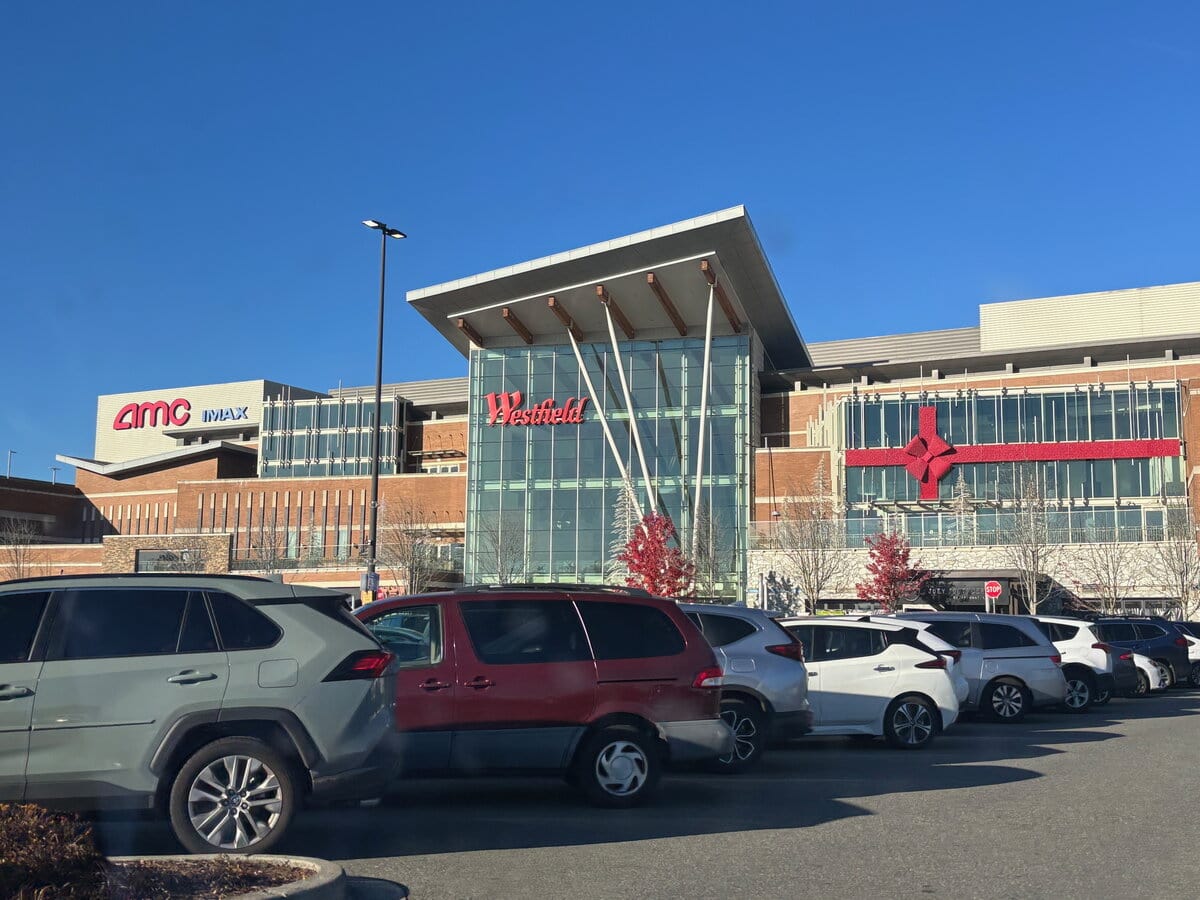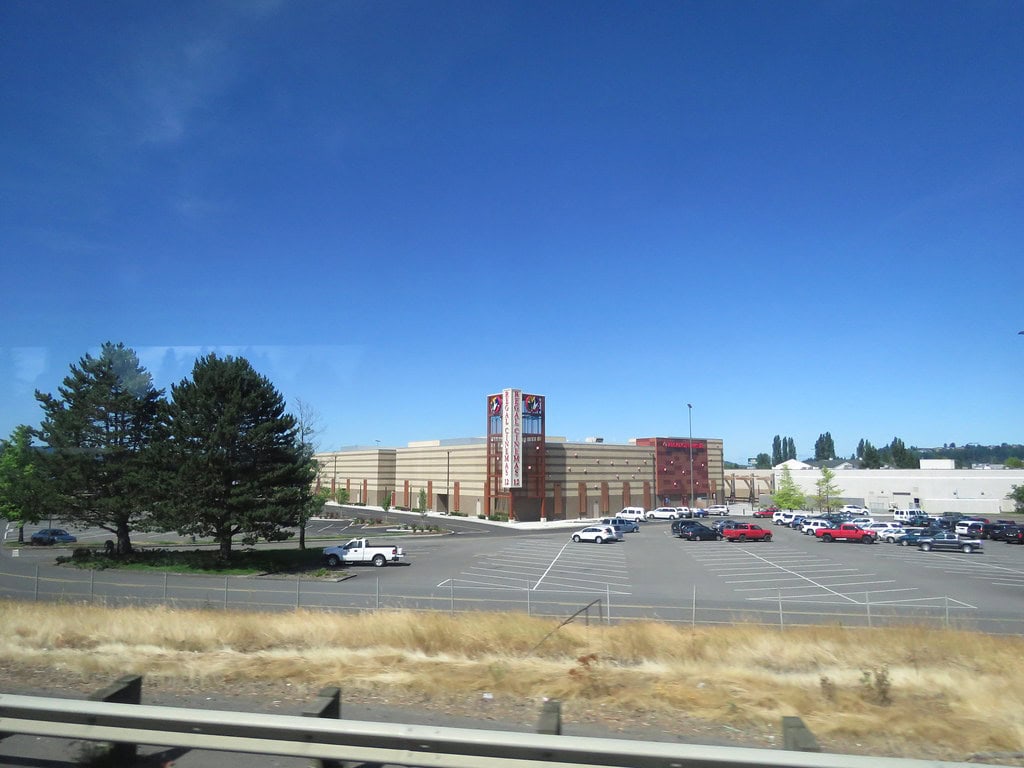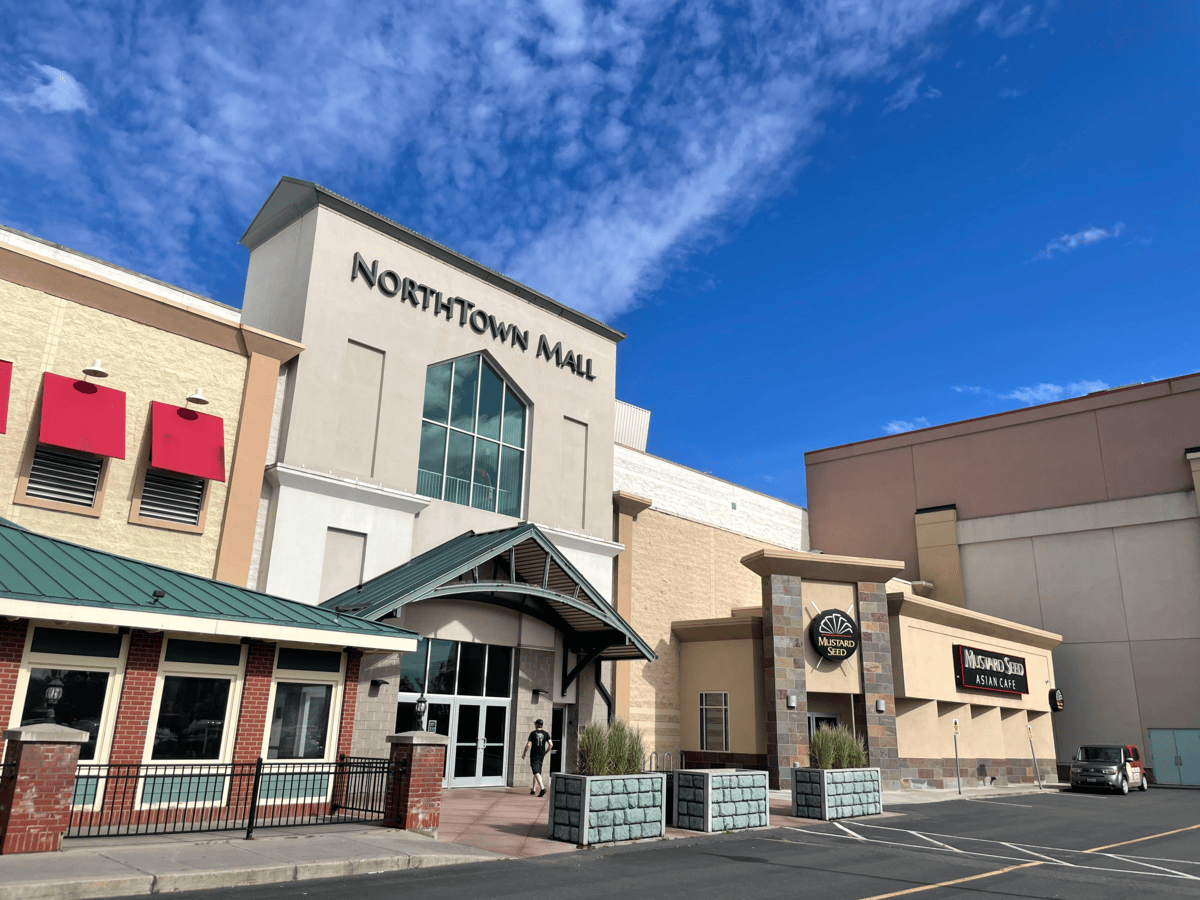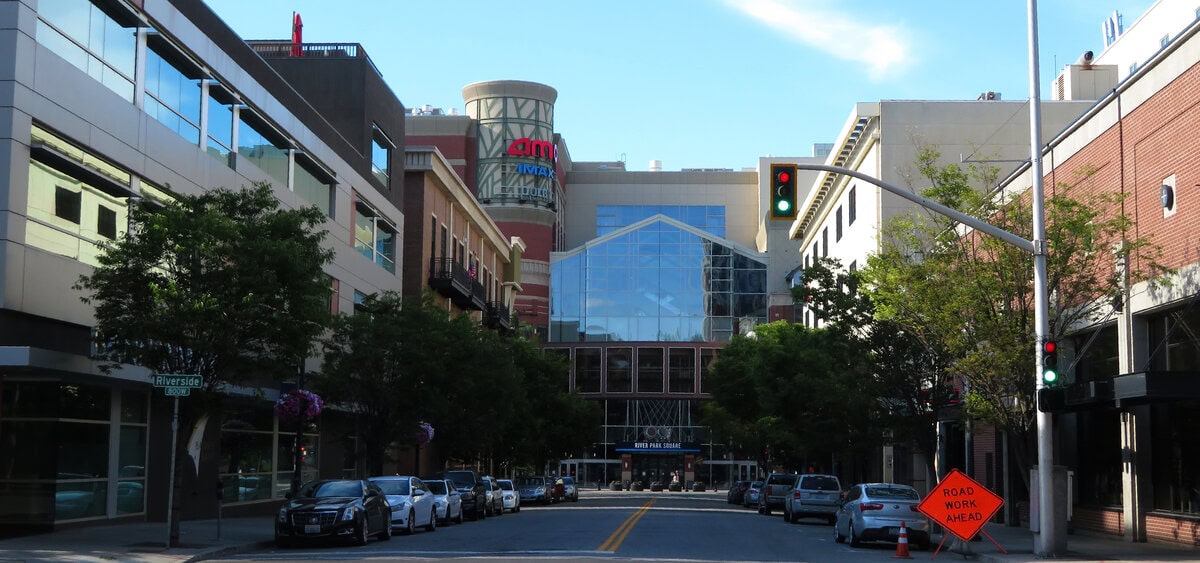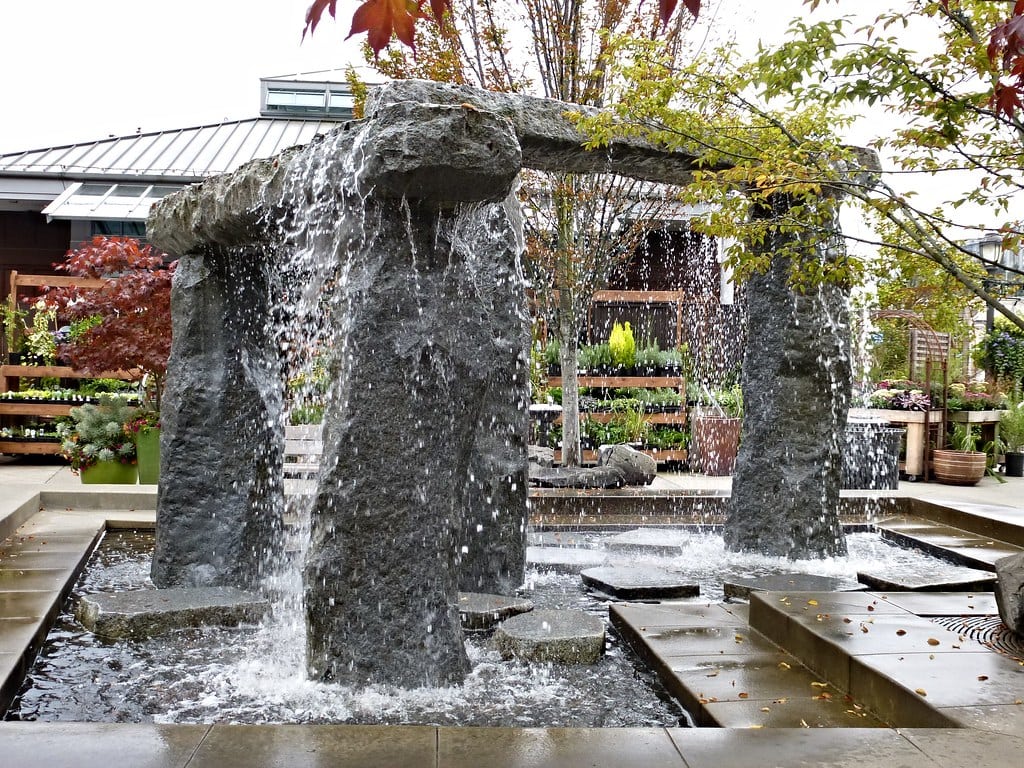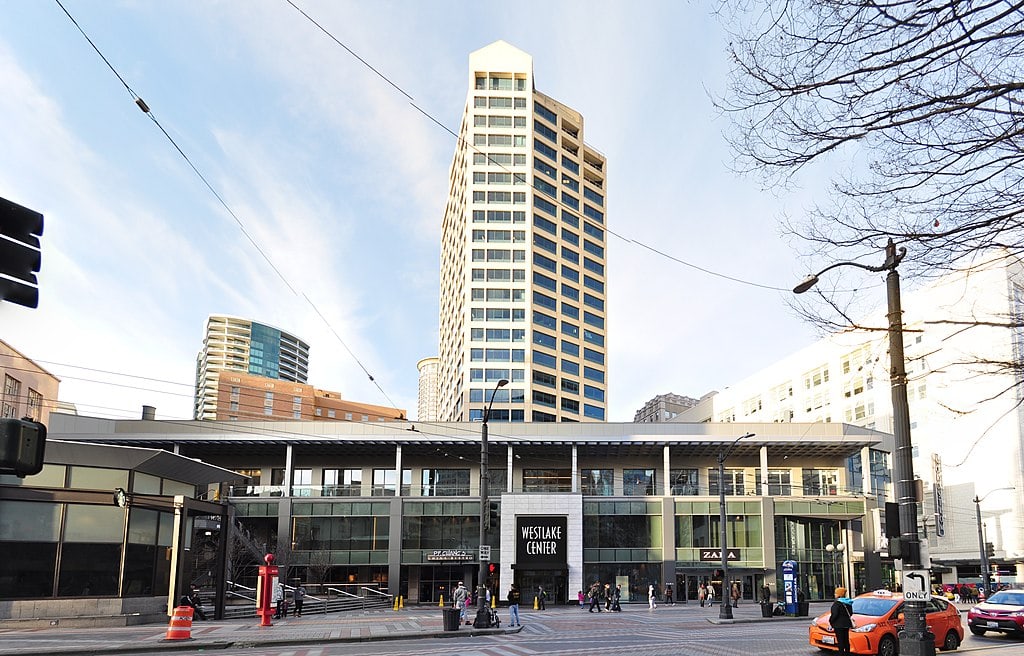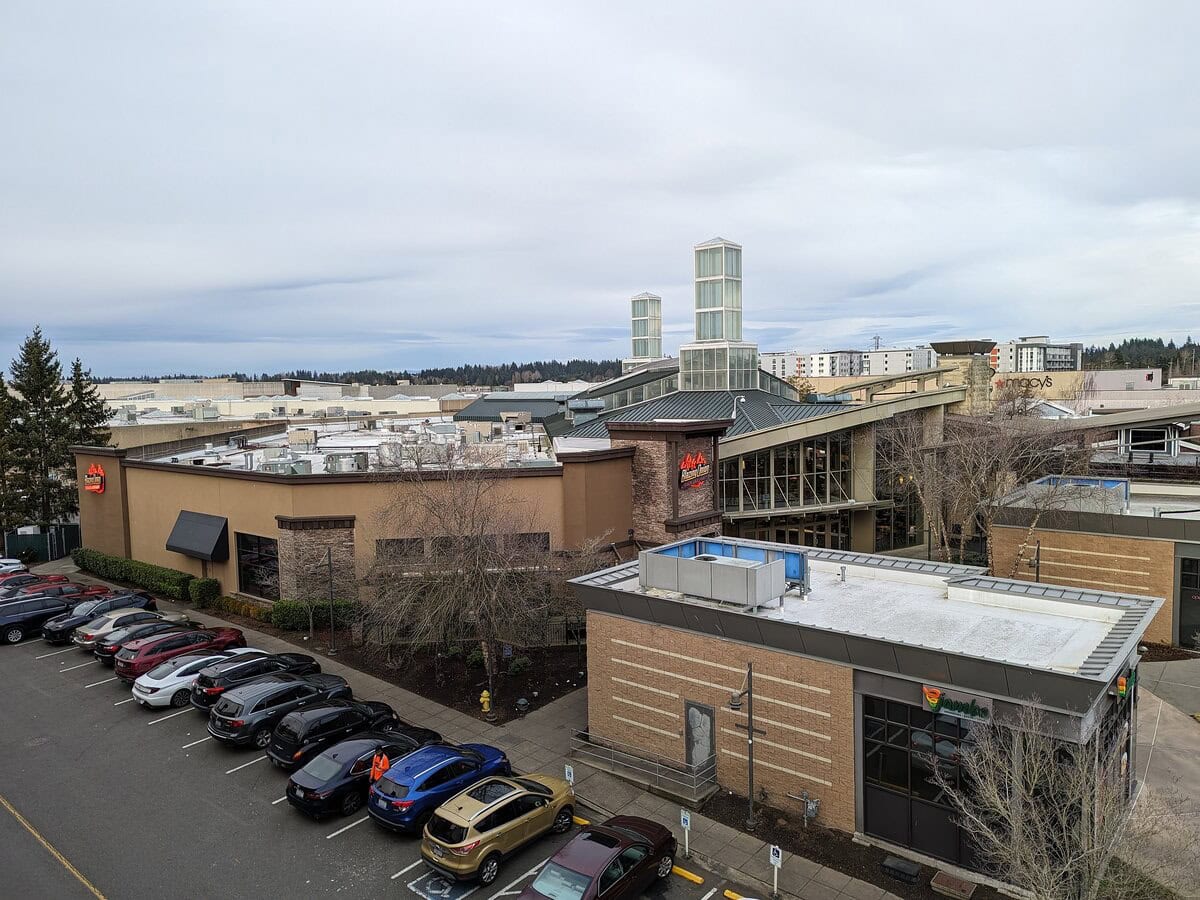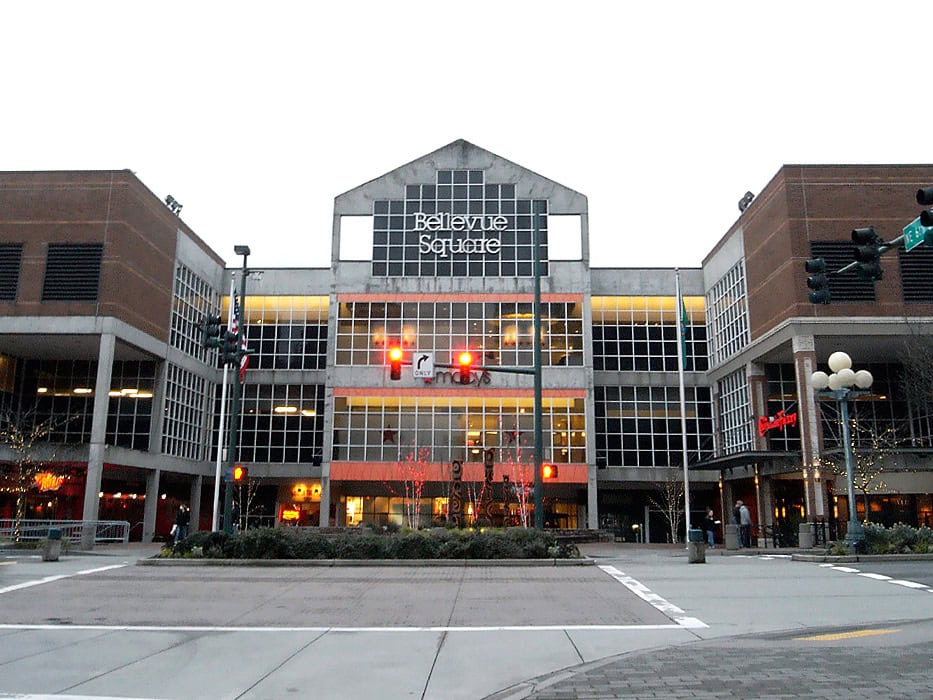NorthTown Mall opens as an open-air center
NorthTown Mall stands at N Division St in Spokane, with its roots in a mid-century plan for a supermarket-led center that began to take shape in the early 1950s.
Albertsons opened a 30,000-square-foot store at Division and Wellesley in 1951, marking the first large retail tenant on the property and helping to anchor a growing cluster of shops.
The project was developed by H. Halvorson Inc. with financing from Travelers Life Insurance.
By 1955, the open-air Northtown center was completed, featuring parking fields and space for national chains.
Woolworth and W. T. Grant soon took an interest in large store sites within the new center, setting a scale that went beyond neighborhood shopping and pointed toward a future regional draw.
Locals referred to the complex as Northtown, a name that stayed in use during its first years as a strip-style shopping plaza.
Sears and The Crescent scale up the center, 1959-1962
In June 1959, plans for a 208,000-square-foot Sears store began to take shape on a 13-acre site at Northtown Mall.
The store opened in June 1961, anchoring one end of the property and introducing Spokane to a new scale of suburban shopping.
Alongside Sears came 110,000 square feet of additional retail space and a 30,000-square-foot enlargement of the existing Albertsons, signaling that the center was no longer just a local strip mall.
By December 1961, The Crescent announced that it would build its first branch outside downtown, a 90,000-square-foot department store.
Its opening in mid July 1962 followed a March celebration when 38 tenants were already trading, a number that grew to 41 in the weeks that followed.
This expansion created a depth of shopping choices unseen in Spokane's neighborhoods.
With Sears, The Crescent, and an expanded Albertsons all in place, employment at the center exceeded 1,300 jobs by 1962.
Shoppers encountered a lineup that included multiple anchors for the first time, and a regional draw template emerged.
The growth in square footage and tenant variety redefined Northtown's role, setting it on a path toward enclosed development in the decades that followed.
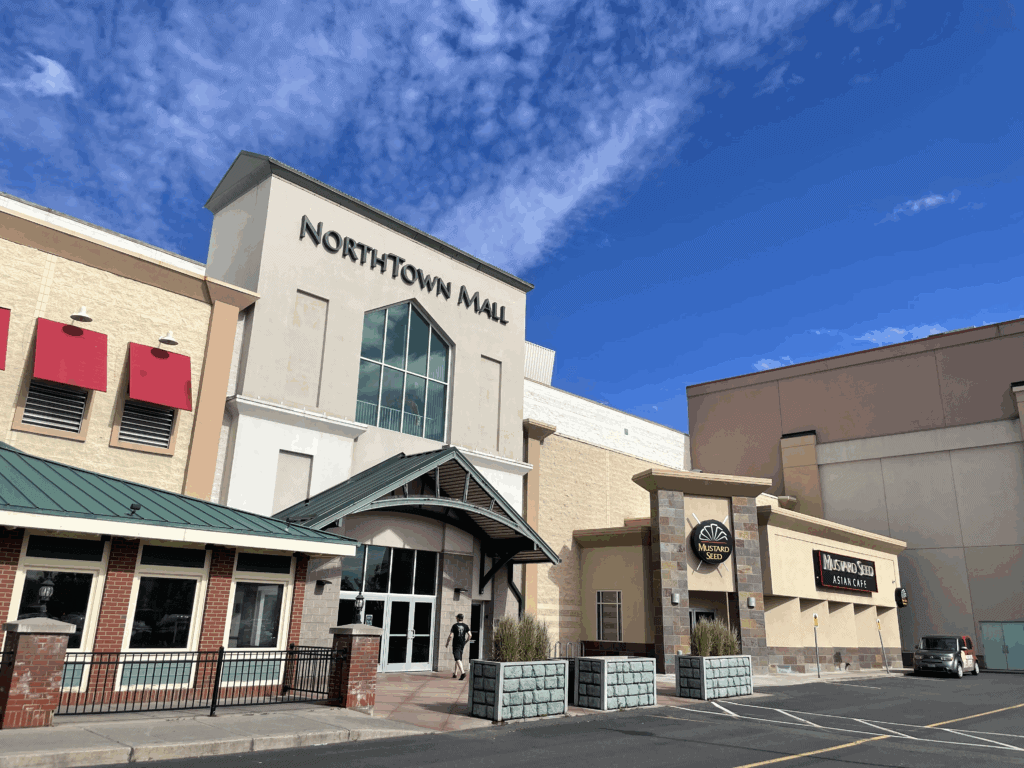
Shifts and stopgaps before enclosure, 1963-1982
Throughout the 1960s, Northtown Mall continued to operate with its anchors intact.
Sears and The Crescent remained the course as department stores, and Woolworth continued in its role as a variety store chain.
The shopping center never abandoned its strip format, its outdoor walkways dating back to the 1950s, even while enclosed malls were fast becoming the standard.
A rupture came in 1976 when W. T. Grant went bankrupt nationwide. Its large Northtown Mall location closed, leaving one of the property's anchor spots vacant.
The site was subdivided into a patchwork of smaller shops under the new label of Northtown Mini-Mall.
Gone was the lone department store, replaced by a group of unassuming tenants. The change kept the square footage in use but tilted the mix of the center.
The rest of the complex saw incremental changes through the late 1970s and into the early 1980s.
Stores turned over, but the overall layout of an outdoor plaza remained in place. By the early 1980s, the once-modern design had grown dated.
The property was still active, but its structure had reached the limit of small-scale adjustments, setting the stage for a full-scale rebuild.
Enclosure and first round of upgrades, 1983-1988
In 1983, Northtown Mall shifted from a plaza to an enclosed mall. Construction closed off the outdoor concourses and replaced them with indoor corridors.
The remodel also introduced a new space. A 17,000-square-foot addition was built beside The Crescent, creating space for additional tenants.
Entrances were redesigned to direct visitors toward the new interior, and the older open-air sections were absorbed into a continuous floor plan.
Anchors carried on in their same locations, but they now connected through hallways under one roof.
This first round of upgrades changed how the property functioned. It looked and operated like the enclosed malls that were taking shape across the country.
By the end of the decade, Northtown Mall had its climate-controlled interior and refreshed spaces.
It was still a single-level center, but the work positioned it for the larger expansion that was already being planned.
Second level and new anchors in the big build, 1988-1991
In August 1988, plans were unveiled for a sweeping 40-million-dollar expansion that would double the size of Northtown Mall.
The project called for a second level, four new department stores, a rebuilt Sears, a structured parking garage, a food court, and scores of new shops.
Sabey Corporation led the redevelopment effort, transforming the 1983 enclosed mall into a larger and more modern complex.
The reshaping of anchors began quickly. Albertsons closed in August 1989 to make way for construction.
Sears liquidated its older store the following month, preparing for relocation into a new, larger building.
The Bon Marché was slated for the expansion, though its rollout stalled when its parent company entered bankruptcy later that year.
At the same time, Woolworth prepared to exit the property, closing in late 1990 after failing to finalize a relocation plan.
New commitments filled the gaps. Mervyn's confirmed its entry in August 1990, and JCPenney announced in November 1990 that it would consolidate two Spokane locations into Northtown Mall.
Construction on Emporium began in April 1991, followed by the opening of JCPenney on August 7 and Emporium on October 17.
The redevelopment reached its high point with a grand opening celebration on October 27, 1991.
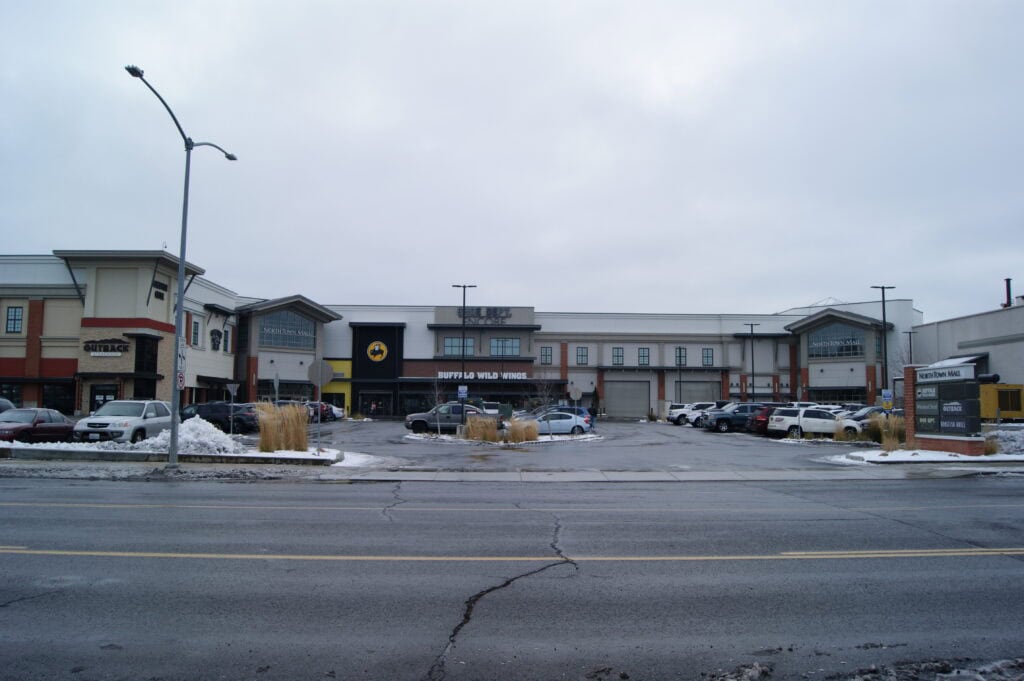
Entertainment wing and retail churn, 2000-2012
In September 2000, Northtown Mall added a new wing that brought in Barnes & Noble, Nordstrom Rack, and a 12-screen Regal Cinemas.
The expansion increased the mall's gross leasable area to approximately 1,050,000 square feet and introduced a broader mix of retailers, including books, off-price fashion, and entertainment.
The anchor shuffle continued soon after. Emporium closed in 2003, and its space was taken over by Steve & Barry's in 2007.
That same year, Mervyn's withdrew from Washington, and Kohl's opened in its place on October 3.
The Bon Marché underwent branding changes during this period as well, adopting the Bon-Macy's name in August 2003 and converting fully to Macy's in 2005.
Retail turnover kept reshaping the lineup. Steve & Barry's collapsed nationally in 2009, shuttering its Northtown Mall location.
Nordstrom Rack left in 2010, relocating to Spokane Valley Mall.
Two years later, Marshalls opened in March 2012, taking the former Nordstrom Rack box. That summer, Wholesale Sports moved into the mall, adding a new category of tenant.
Together, these shifts showed how the early 2000s blended fresh entertainment with steady anchor changes.
Rebuild, experiences, and anchor losses, 2013-2022
In October 2013, a major renovation was announced for Northtown Mall.
The plan called for demolition of 120,000 square feet on the north end of the property and replacement with about 63,000 square feet of new construction.
The project also included a new entrance, a reconfigured parking lot, and updated finishes inside, with fresh paint, lighting, and signage.
During this period, the property also leaned into attractions. Get Air Trampoline Park opened in 2015 in a lower-level space, adding recreation to the tenant mix.
On August 1, 2019, Blue Zoo, an 11,000-square-foot interactive aquarium, began operations inside the mall.
That same summer, Sears confirmed it would close by late October, marking the end of a long run as one of the original anchors.
Anchor losses continued into the next decade. On January 5, 2021, Macy's announced that it would close its Northtown Mall location, with liquidation to conclude by April.
A year later, in February 2022, ownership changed hands when Kohan Retail Investment Group purchased the mall from Brookfield for $49 million.
The sale transferred one of Spokane's largest retail centers to a new owner known for acquiring enclosed malls nationwide.
Security incident and a major reuse plan, 2024-2025
On June 9, 2024, Spokane police responded to reports of shots being fired outside Mustard Seed Asian Cafe at Northtown Mall.
Officers found a shell casing near the restaurant but reported no injuries.
The incident was brief, yet it underscored the challenges of security in an active retail setting.
The mall also faced a change of a different kind.
On February 18, 2025, Broad River Retail confirmed plans to redevelop the former Macy's into a three-level Ashley Store & Outlet measuring roughly 101,000 square feet.
The store's layout will include a showroom, outlet floor, and bedding department.
In February 2025, the agreement was signed, marking the beginning of the reuse of a long-vacant anchor.
This marked the mall's most recent step toward keeping its large spaces active.

